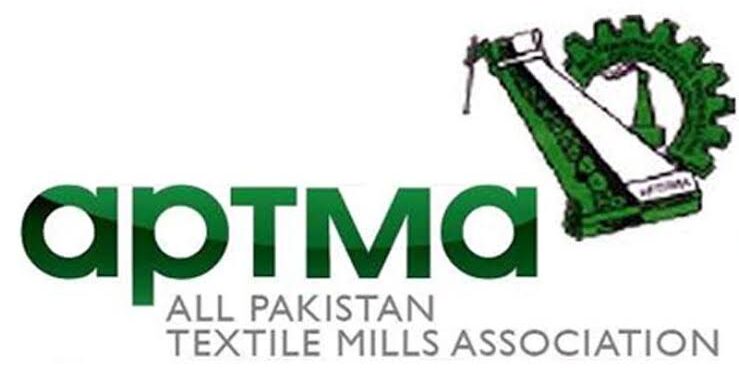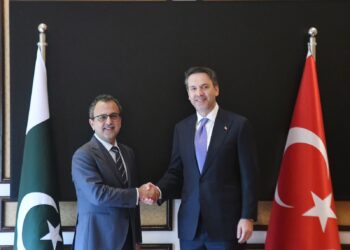LAHORE: The All Pakistan Textile Mills Association (APTMA) has expressed deep concern over the energy policies that are undermining Pakistan’s industrial viability and export competitiveness. The failure to ensure regionally competitive energy pricing is stalling economic recovery, deterring investment, and accelerating deindustrialization.
In a statement the Association said that despite categorical assurances at the highest levels that industrial electricity tariffs would be rationalized to 9 cents/kWh by April 2025, the tariff has moved in the opposite direction. Industrial electricity costs have increased from 10.4 cents/kWh in May 2025 to 11.6 cents/kWh in August, with further increases expected. While some temporary relief was recorded in recent months due to higher hydel generation, it is not sustainable. Industrial energy consumers in Pakistan continue to pay well above regional benchmarks of 5–9 cents/kWh in India, Bangladesh, China, and Vietnam.
The Ministry of Energy’s recent interventions, especially the arbitrary and miscalculated levy on gas for captive power and the push for grid transition have created further problems rather than solutions. Many industrial units, particularly those operating high-efficiency combined heat and power (CHP) plants, were either unable to transition due to exorbitant costs for load enhancements and poor grid reliability or were forced to shut down efficient systems only to face frequent outages and voltage fluctuations on the grid while having to use even more gas in boilers. These unstable grid supply and repeated fluctuations and outages result in millions of rupees in production and operational losses. Many units also do not have adequate grid electricity supply and must rely on gas to meet their power requirements; the punitive gas levy has financially crippled these units.
The consequences are visible across the energy and industrial landscape. The marginal increase in industrial load on the grid has been far outweighed by the accelerating exit of residential, agricultural, industrial and commercial consumers to solar generation. This is the direct result of unaffordable and non-transparent pricing policies. Meanwhile, the government’s expectation of generating Rs. 105 billion from the gas levy on captive use has proven entirely unrealistic as demand for gas has collapsed.
This flawed approach has also severely disrupted the gas sector. The artificially created RLNG surplus—resulting from industrial demand destruction—is being diverted to domestic consumers at an $8/MMBtu subsidy, while industry has been priced out at $16/MMBtu. As a result, local gas production has declined, with OGDCL alone projecting losses exceeding $378 million. Exploration activity has also collapsed under the current policy regime—no bids were received for 22 out of 23 oil and gas exploration blocks in the most recent petroleum licensing round. The gas circular debt has now crossed Rs. 2.6 trillion, a crisis worsened by policies that have neither fiscal nor commercial logic.
One of the most concerning developments is the extension of the Rs. 3.23/kWh circular debt surcharge for an additional six years—a measure that was initially introduced as temporary. The financing cost surcharge, which was supposed to be phased out, has instead been made into an indefinite feature of the power tariff. These surcharges have become a tool to pass the consequences of systemic failures onto paying consumers, rather than addressing the root causes.
The industrial cost of electricity is inflated by a cross-subsidy of over Rs. 130 billion annually, primarily to support protected and lifeline consumer categories. The actual cost of service to industrial users is around 8–9 cents/kWh, yet they are charged significantly more to sustain a subsidy regime that is becoming increasingly untenable. With the rapid spread of solar adoption, a growing number of residential consumers who, for example, previously used 400–500 units per month are now falling into subsidized slabs. These households consume less grid electricity due to rooftop solar but still qualify for protected categories.
It appears the government has opted for a policy of providing free or heavily subsidized electricity rather than focusing on creating employment and economic opportunity. But the pertinent question is who will pay for this electricity when the paying consumer base is eroding rapidly? As solar and now even battery storage prices fall, more consumers will exit the grid altogether.
The Competitive Trading Bilateral Contract Market (CTBCM) is another example of lack of practical engagement with industrial realities. The wheeling charge of Rs. 12.55/kWh, along with added premiums, renders bilateral power purchase financially unviable, especially with hybrid consumption from the grid is charged at the marginal cost. The cap of 800MW further restricts industry’s access to the open-market, necessitating hybrid power consumption.
The cumulative impact of these policies is clearly reflected in Pakistan’s macroeconomic indicators: export growth remains stagnant, industrial activity is subdued, and new investment—particularly in export-oriented manufacturing—has all but dried up. Just as concerning is the growing crisis of confidence in the reliability of official data. The recent revelation of an $11 billion discrepancy in trade figures over two years has raised serious questions about the integrity of the country’s data reporting mechanisms.
Pakistan’s exporters are expected to compete in international markets while facing some of the highest input costs and most hostile operating conditions in the region. Electricity prices remain in the range of 11–14 cents/kWh—compared to 5–9 cents/kWh in India, China, Vietnam, and Bangladesh. Exporters here are subjected to double interest rates, double taxation, higher tax rates than those selling in the domestic market, and repeated, arbitrary levies that lack any economic justification. Tax refunds remain delayed and inconsistent, while businesses are routinely subjected to harassment from tax authorities instead of facilitation.
In contrast, Pakistan’s competitors operate under far more predictable and supportive policy regimes, with energy prices as low as 5 cents/kWh, single-digit interest rates, simplified tax structures (e.g. 5% sales tax, 10% income tax), and consistent incentives for exporters. When the United States imposed import tariffs, countries like India and Bangladesh responded by further rationalizing their tax regimes and scaling up support to their export sectors.
APTMA has urged the Government to fulfill its commitment of providing industrial electricity at regionally competitive rates. Likewise, industry must be granted non-discriminatory access to gas at the actual cost of RLNG, without being forced to subsidize other sectors such as fertilizer, or absorb distortions caused by unaccounted-for gas losses (UFG) and inefficiencies.
These corrective measures are critical to arrest the ongoing economic stagnation and revive industrial and export growth. A competitive energy pricing regime will enable industry to provide reliable baseload to the grid, support utilization of surplus generation capacity, halt the utility death spiral, and unlock the full potential of Pakistan’s manufacturing sector. These reforms will in turn lead to increased exports, more jobs, higher investment, and greater tax revenues. The textile industry alone has the capacity to export $25 billion annually but realizing this is impossible without competitive energy prices. Enabling industry to thrive should thus not be seen as a concession but rather a prerequisite for sustainable and inclusive economic growth,” the Association added.
Islamabad seeks Turkiye’s reputable firms partipation in DISCOs privatisation process
ISLAMABAD Pakistan has invited reputable international private-sector investors to participate in the upcoming privatization of its Power Distribution Companies (DISCOs),...
Read more














